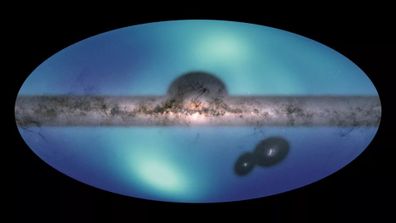“Water bears” and baby squid are about to hitch a ride to space.
No, we’re not starting an aquarium in space.
These animals will be joining the astronaut crew aboard the International Space Station for research purposes.
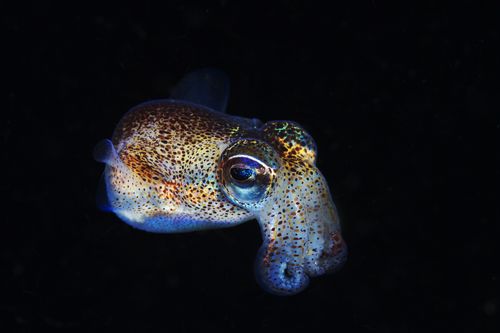
SpaceX is scheduled to launch its 22nd cargo resupply mission to the space station on June 4 at 3.29am (AEST).
It’s even loaded up with new solar panels that will be installed outside the space station by astronauts during spacewalks in June.
Some 5000 tardigrades, also known as water bears, and 128 baby glow-in-the-dark bobtail squid will be among the precious cargo heading to the station.
Both will be involved in experiments there.
The first will be to see how water bears tolerate the environment.
Researchers also want to know if the lack of gravity affects symbiotic relationships between the squid and beneficial microbes.
Hundreds of scientific experiments are carried out each day on the space station; it’s an orbiting laboratory, after all.
Astronauts oversee these experiments and report back their observations to researchers on Earth.
The research helps us gain a better understanding of life in zero gravity as well as discovering benefits that can be applied on Earth.

Beneath a microscope, tiny tardigrades look like water bears.
Although they are commonly found in water – and at times, serving as the nemesis in Ant-Man and the Wasp – tardigrades are known for their ability to survive and even thrive in the most extreme environments.
“Tardigrades are a group of microscopic animals that are renowned for their ability to survive a number of extreme stresses,” said Thomas Boothby, assistant professor of molecular biology at the University of Wyoming and principal investigator for Cell Science-04 tardigrade experiment, in a press conference today.
“Some of the things that tardigrades can survive include being dried out, being frozen and being heated up past the boiling point of water.
“They can survive thousands of times as much radiation as we can and they can go for days or weeks with little or no oxygen.”
They can tolerate these extremes better than most forms of life, and what’s more extreme than space?
It’s not the first time tardigrades have gone to space – and there may even be some of them on the moon after a mission carrying them crashed into its surface.
“They’ve been shown to survive and reproduce during spaceflight, and can even survive prolonged exposure to the vacuum of outer space,” Professor Boothby said.
Scientists have been able to sequence the tardigrade genome, so they can actually measure how these microscopic animals are impacted by different environmental conditions based on their gene expression.
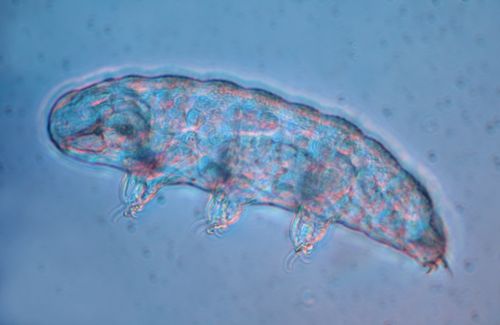
Professor Boothby’s experiment is designed to see how tardigrades adapt to life in low-Earth orbit, which could lead to a greater understanding of the stressors humans face in space.
The research involves studying the molecular biology of water bears both for the short-term, such as water bears that live on the station for seven days to see their immediate adaptation, as well as long-term.
These multigenerational water bears could help scientists understand the genetics behind adaptation and survival in a highly stressful environment.
Even though the space station is more protective than existing in deep space, humans and animal experiments aboard are subjected to decreased gravity and increased radiation exposure.
“Understanding how to safeguard astronauts and other organisms against these stresses will be essential for ensuring a safe and productive long-term space presence,” Professor Boothby said.
The tardigrades will arrive on the station in a frozen inanimate state, then be thawed out, revived and grown in a special bio-culture system.
The short- and long-term study results should allow researchers to watch what genes are being turned on or off to help the tardigrades survive.
For example, if researchers determine that tardigrades are producing a lot of antioxidants to help combat the level of radiation they’re experiencing, that could tell researchers that astronauts need to eat a more antioxidant-enriched diet.
“Ultimately this information will give us insights into how one of the toughest organisms on Earth is able to survive the rigours of spaceflight,” Professor Boothby said.
“Our hope is that these insights will provide avenues for developing countermeasures or therapies that will help safeguard astronauts during prolonged space missions.”
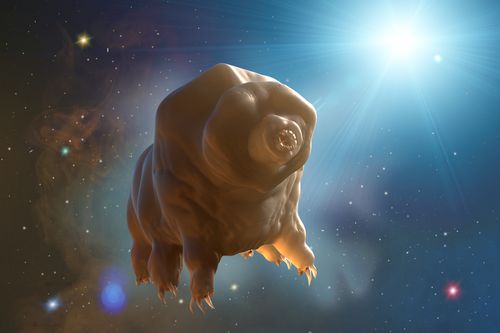
Astronauts are about to experience a little bit of umami in space, just not the kind they can taste.
The UMAMI experiment stands for Understanding Microgravity on Animal Microbe Interactions and Jamie Foster, professor in the Department of Microbiology and Cell Science at the University of Florida, is its principal investigator.
She’s eager to see how healthy beneficial microbes communicate with animal tissues in space.
“Animals, including humans, rely on our microbes to maintain a healthy digestive and immune system,” Professor Foster said.
“We do not fully understand how spaceflight alters these beneficial interactions.
“The UMAMI experiment uses a glow-in-the-dark bobtail squid to address these important issues in animal health.”
Bobtail squid, which are only about three millimetres long, work as the perfect model to study this for two reasons.
These squid have a special light organ inside the body which can be colonised by a species of luminescent bacteria.
The squid can then use that bacteria to glow in the dark.
Because it’s a single species of bacteria and one type of host tissue, it’s easy for researchers to follow how this process unfolds, Professor Foster said.
The squid also have an immune system which is very similar to the type that humans have.
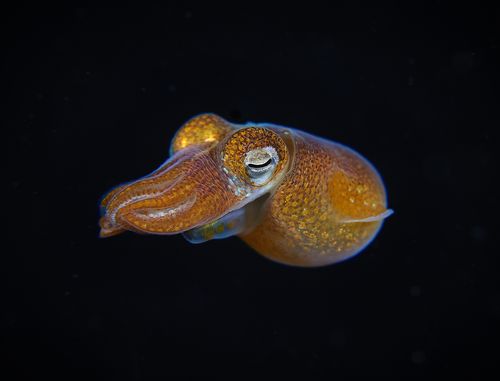
“We can take a lot of parallels of how the immune system is responding to these beneficial microbes in the space environment,” Professor Foster said.
The squid are born without bacteria, so they have to acquire it from their environment.
The humans conducting the experiment will initiate this symbiosis by adding the bacteria to the animals and observing what happens during the first few hours as colonisation takes place.
The squid will be part of a completely autonomous experiment housed in what looks like a box.
Pumps will add water or bacteria when its needed, or pump out water if necessary.
The squid tissue will be frozen on the station and returned to Earth later, preserving the molecular timeline of which genes turned off and on for the squid, similar to the tardigrade experiment.
Researchers will be able to learn if spaceflight alters the mutually beneficial relationship between animals and their microbes.
“As astronauts explore space, they’re taking with them a company of different microbial species,” Professor Foster said.
“It’s really important to understand how those microbes, collectively called the microbiome, change in the space environment and how those relationships are established.”
This content first appear on 9news

